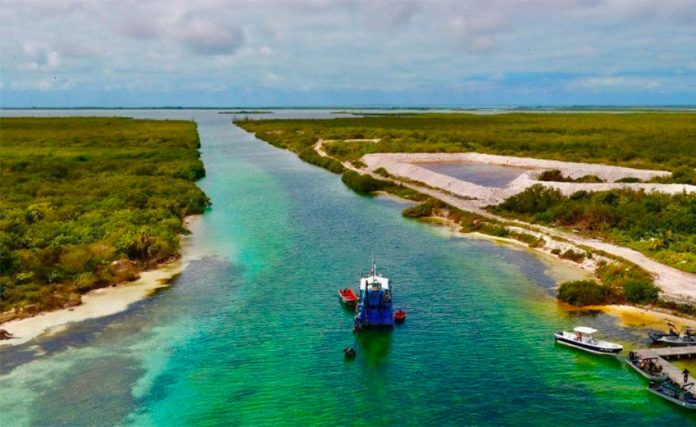The Quintana Roo government has begun dredging to extend the Zaragoza canal in order to spur marine tourism in the region.
The project will also boost trade by connecting the state capital Chetumal to the community of Xcalak.
Governor Carlos Joaquín González and military authorities inaugurated the project at the naval base located at the entrance to the canal. He said that opening a navigable route between the Caribbean and the bay of Chetumal is a strategic economic action.
“This project will allow new navigation routes that reinforce our commercial and tourism ties with Belize and all of Central America,” he said.
The canal will be extended 4.8 kilometers to connect the Caribbean Sea with the bay of Chetumal, bringing its total length to 6.3 kilometers. It will also be deepened to three meters.
On February 17, 2017, the state obtained the titles to the land on which the canal will be built, an area of approximately 339 hectares.
So far, 29 million pesos (US $1.5 million) have been provided for the canal project.
The state has requested another 400 million pesos (US $20.7 million) for the project for 2020.
Source: El Universal (sp)
